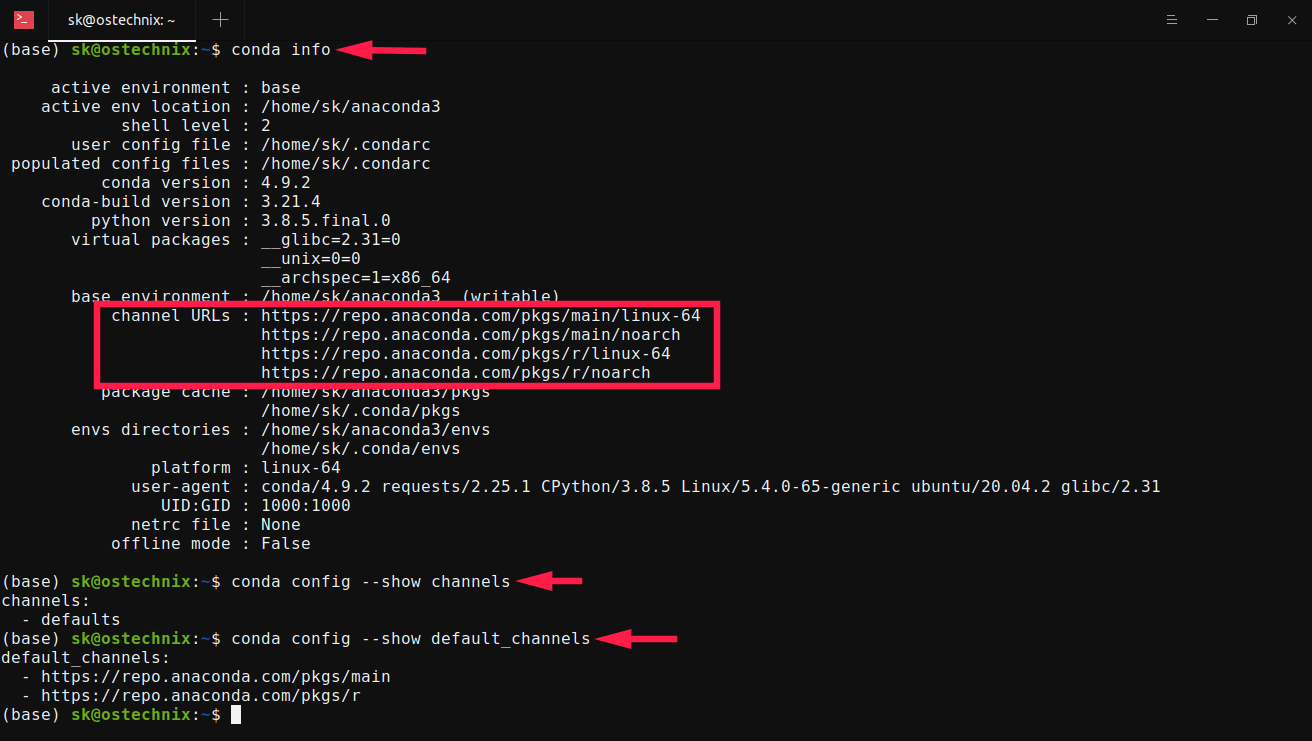
- Conda install package to specific environment how to#
- Conda install package to specific environment update#
- Conda install package to specific environment code#
For that you have the following three options: Instead, we only need an image that contains an environment that can execute conda and the other basic things we need in a container build.

This contains a vast set of scientific Python packages in it.Ĭontinuumio/anaconda3 2020.11 5e5dd010ead8 2 months ago 2.71GB This is due to the fact that it already brings the whole anaconda environment. The ones created 2 months ago are part of the continuumio/anaconda3 base image. 2 months ago /bin/sh -c #(nop) ENV LANG=C.UTF-8 LC_ALL=C… 0B 2 months ago /bin/sh -c #(nop) ENV PATH=/opt/conda/bin:/… 0B
Conda install package to specific environment update#
2 months ago /bin/sh -c apt-get update -fix-missing & … 211MB 2 months ago /bin/sh -c wget -quiet … 2.43GB For that we look at the individual sizes of the container layers:Įbf2b267e4d8 18 minutes ago /bin/sh -c #(nop) CMD ["conda" "run" "-n" "… 0BĪ113c9d31b1a 18 minutes ago /bin/sh -c conda run -n nyc-taxi-fare-predic… 1.05MBĠ4c85327c969 18 minutes ago /bin/sh -c conda env create 1.5GBĪ749aca38f88 22 minutes ago /bin/sh -c #(nop) COPY dir:461eb7a23d1121123… 274MBĥe5dd010ead8 2 months ago /bin/sh -c #(nop) CMD 0B Use a smaller base imageĪfter having built a base image and already outlined another mistake you can run into, let’s improve the image a bit. In this case, we would get the committed environment.yml. This tiny bit of RTFM is my most popular tweet to date. To avoid these issues without keeping track of what you have installed, you can ask conda with conda env export -from-history to export an environment file with only the package specifications you have explicitly requested on the command line.

While in this case, it can be installed on Linux but sometimes you also have packages that are only available on one OS and then conda wouldn’t be able to find an installable version if after you have removed the build string. This is only used on macOS in conda-forge and thus not necessary for Linux environments. In this case, libcxx is the C++ library used for builds done with the clang compiler. We could avoid this issue by using -no-builds on the export but will directly face the next issue that native dependencies are different between operating systems. Thus conda won’t be able to find a package with this build string for Linux.
Conda install package to specific environment code#
Most importantly it is different between macOS and Linux when you have compiled code inside the package. This is different for different builds but the same version of a package. The last bit of the version habf9029_0 is the build number/string/hash. The file was generated on macOS while the Docker container is a Linux system. This shows two issues that come with a local export on an operating system than your deployment operating system. It suffices actually to only look at the libcxx=11.0.1=habf9029_0 line. In our initial setting, we have checked out the git repository and are running all commands from the repository root. The model is served via FastAPI and is already using the best practices like uvicorn there. While I have seen this approach in the wild, most of the ones I have seen were already using the basic things I will improve in the first sections.Īs an example, I have built a really simple machine learning model using scikit-learn and LightGBM that predicts a fare price for a taxi trip in New York City. I have chosen a particularly bad one here to explain some more things. There are several simple but not so effective approaches to put conda environments into a container. We will look at all the flaws this approach brings with it and optimise the workflow bit-for-bit until we reach a near-perfect container. In this article, I though want to start at the beginning again and have a look at the most obvious way one would put a conda environment into a Docker container. Over the course of time, we have also developed new techniques that help trim down the sizes of Docker containers even further. Due to changes in the default content of conda-forge packages and specific optimisation of some particular heavy packages, it will though yield fewer savings nowadays. It is still as valid nowadays as it was back then. But with a bit more love for details, you can optimise the process so that the build is faster and the resulting container much smaller.įor optimising conda-environments-in-docker Jim Crist-Harif’s “Smaller Docker images with Conda” blog post has been the go-to resource for a long time.
Conda install package to specific environment how to#
Deploying conda environments in (Docker) containers - how to do it rightĭeploying conda environments inside a container looks like a straight-forward conda install.


 0 kommentar(er)
0 kommentar(er)
